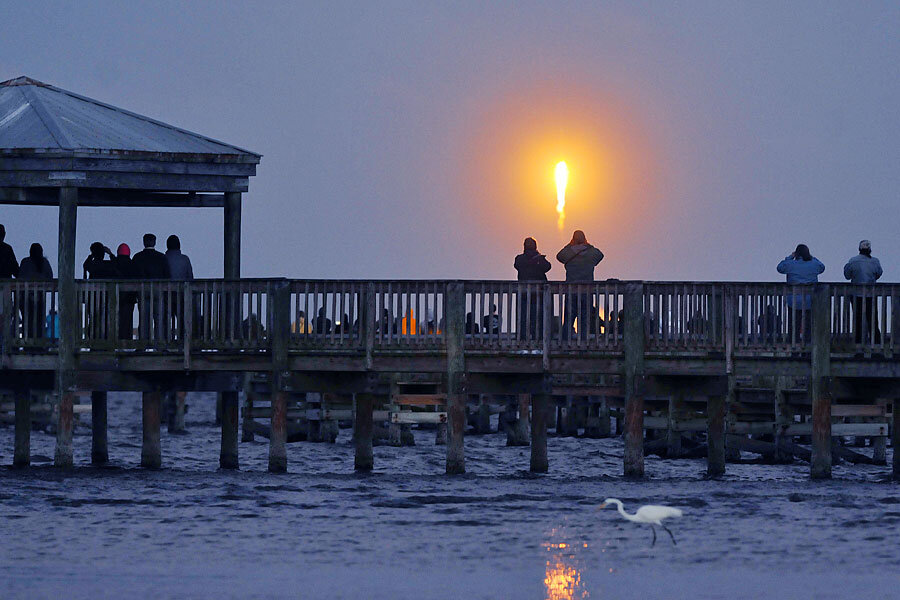SpaceX delays Falcon Heavy rocket debut launch – again
Loading...
The first flight of SpaceX's Falcon Heavy rocket will occur no earlier than November 2016, company president and COO Gwynne Shotwell announced last week. The Falcon Heavy was originally scheduled to launch in 2015, then in May 2016, then in September, and now November.
The recent launch of the Falcon Heavy's smaller cousin, the Falcon 9, once again dashed hopes that the ostensibly reusable rocket could be safely landed on a barge after use. The launch’s primary mission, however, succeeded: The Falcon 9 rocket lifted a 12,000 pound satellite called the SES-9 into orbit.
After the failed landing attempt, SpaceX founder Elon Musk reiterated his faith in the rocket:
If Mr. Musk is correct, and SpaceX manages to successfully land and reuse a Falcon 9 rocket, the space industry could see a dramatic reduction in spaceflight costs. Just reusing the first stage could slash launch prices by 30 percent, said Ms. Shotwell.
To refuel and relaunch a used Falcon 9 rocket would cost about $4 million, she estimates, resulting in a total launch price of about $40 million.
How Falcon Heavy stacks up
Spaceflight is expensive, so the more a rocket can carry per launch, the better.
Earlier this month, Falcon 9 was able to lift about 12,000 pounds into orbit. SpaceX predicts that for low Earth orbit flights (LEO), its maximum payload is about 29,000 pounds.
In comparison, Falcon Heavy’s payload will be about 117,000 pounds, about ten times that of Falcon 9’s most recent launch, at a cost about of $90 million, or about $769 dollars per pound of payload.
The Falcon 9 is far more expensive per pound. With SpaceX currently pricing such a launch at $61.2 million, the Falcon 9 runs about $2,110 per pound of payload.
But even that price is dwarfed by that of the Space Shuttle. According to NASA, the average price of a space shuttle launch was $450 million, making the cost per pound of NASA’s last mission, a 2011 Atlantis mission carrying nearly 30,000 pounds, close to $15,000 per pound.
The reusable shuttle cost more per pound than the single-use Saturn V rocket, which NASA used between 1966 and 1973 to fly men to the moon. The Saturn V could carry 300,000 pounds, far more than even the Falcon Heavy is scheduled to carry, for about $6,500 per pound of payload, in 2016 dollars, according to a CBO report.
NASA says that it costs about $10,000 on average to send a single pound into space today, though the agency continues to explore low-cost options. Both Falcon 9 and Falcon Heavy offer a major improvement on NASA’s cost calculations, at under $3,000 each.
Shotwell estimates that SpaceX will eventually recover between 50 and 80 percent of its rockets, which improves the likelihood that the company can offer even further price cuts to customers for reused rockets. She added that SpaceX currently needs “just under” three weeks to build a Falcon 9, and expects to shave that down to two weeks soon.
Whatever the Falcon 9 and Falcon Heavy can offer future customers, its repeated delays have forced current customers ViaSat and Inmarsat to find alternate launch agents for this summer.








